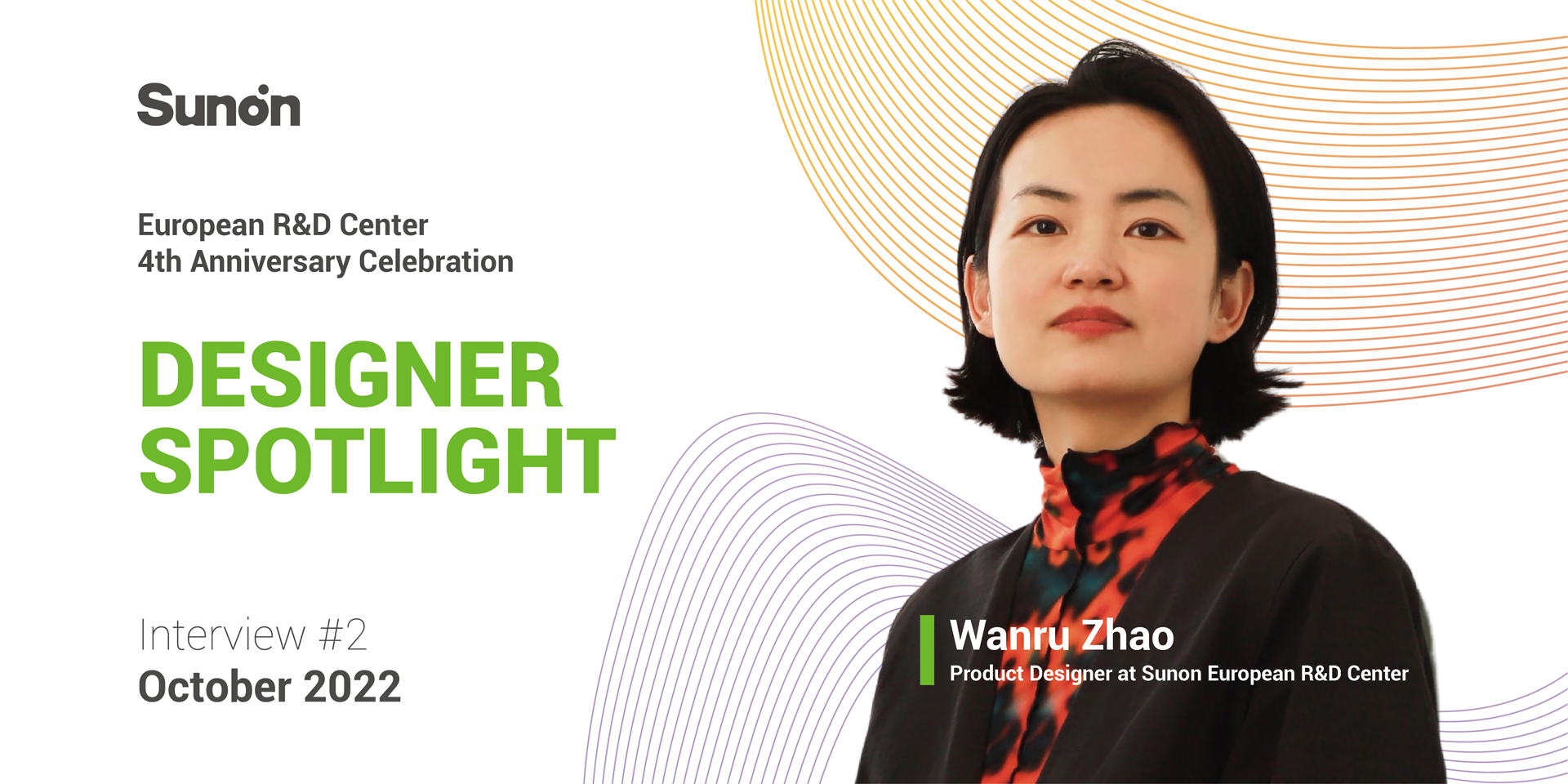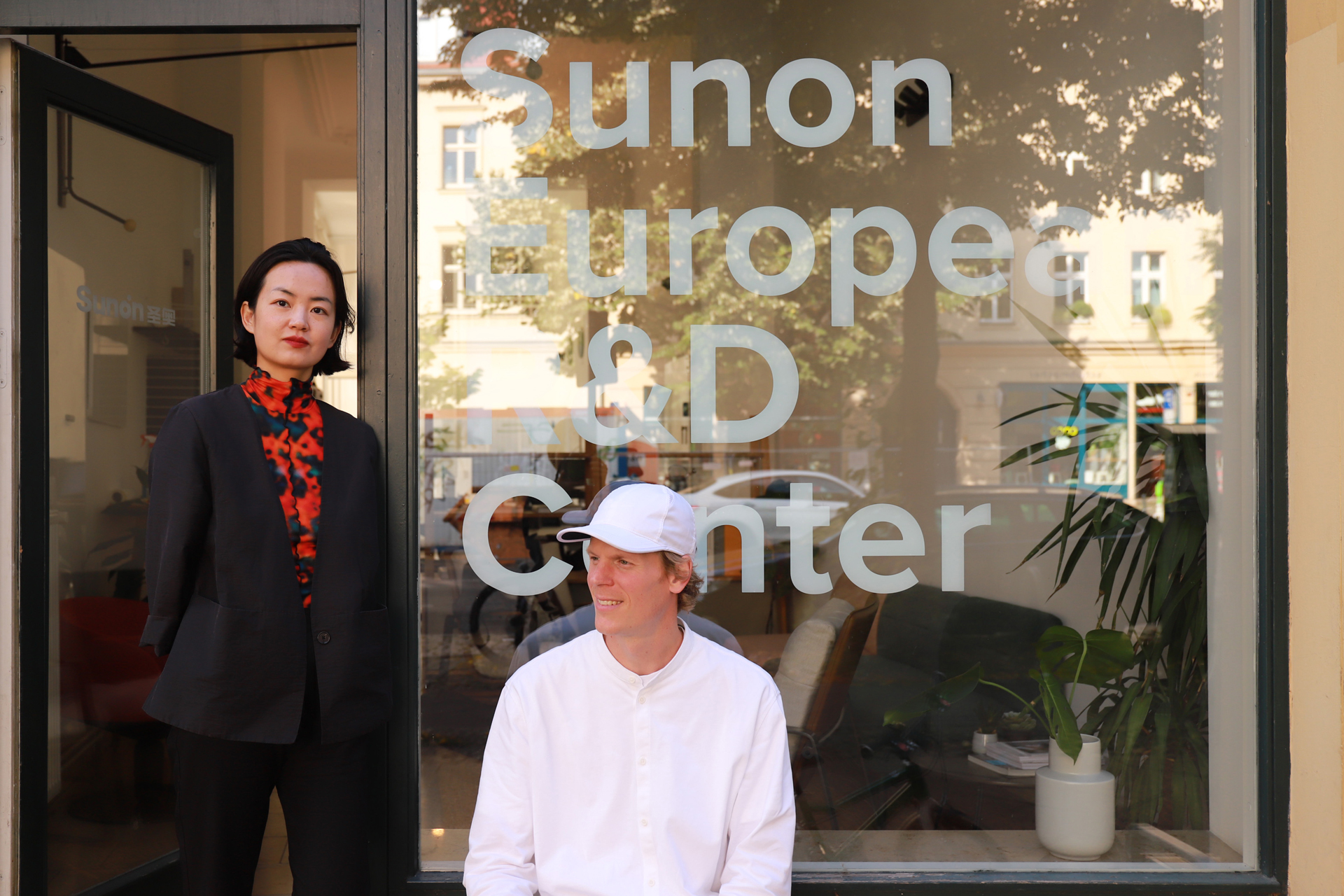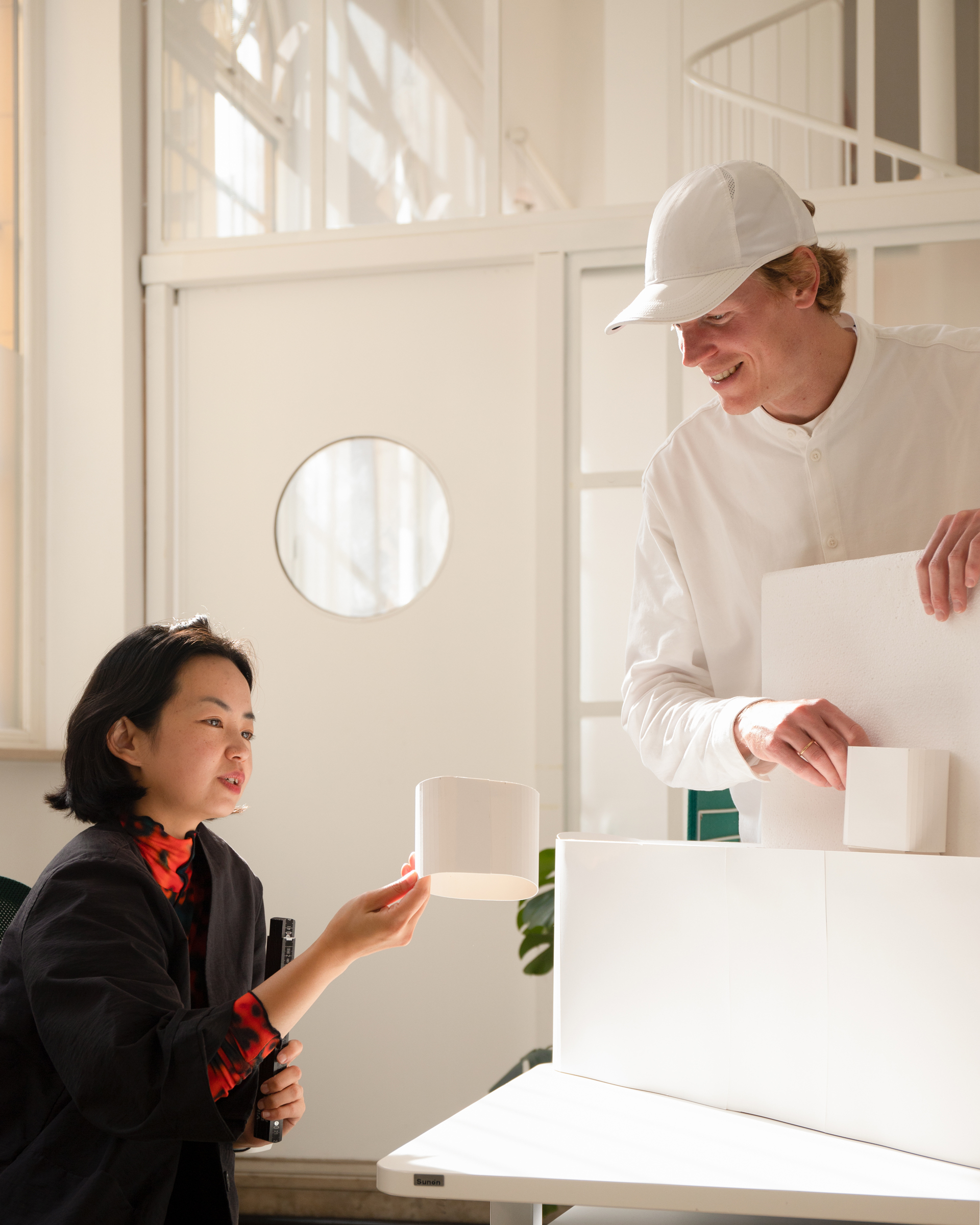
This month, the spotlight is on Sunon's European R&D Centre in Berlin, Germany, as we celebrate its 4th Anniversary on October 22nd. It was established in 2018, with the vision to integrate global design resources while upgrading technological innovation as well as global market development. The European R&D Centre in partnership with the domestic National Industrial Design Centre in China has played a crucial role in improving our design and innovation capabilities as well as the global service capacity.
To recognize the contribution of the European Design Team, we are featuring two key team members on our Global pages this month. For the first feature, we interviewed Fynn Freyschmidt, the Design Director of our European R&D center. The second interview hosted by Debjit Mandal (Manager- Digital Content) was with Wanru Zhao, our Product Designer from the Sunon European R&D center. She discussed the need for change in office furniture design and her observations about the future of modern workplace settings.

Debjit: It's a pleasure having you for this interview. Could you talk a little bit about your work experience and position at Sunon for our readers?
Wanru: Before coming to Sunon, I was engaged in designing residential furniture at a premium Berlin design studio. It was a great experience to work with various designers and artists on that job, and they broadened my point of view. In 2021, in my tenth year in Germany, I had the pleasure to join Sunon's European R&D team. I am currently working as a product designer.
Debjit: What design philosophies and sources of inspiration do you use?
Wanru: In all honesty, I can't say for sure what my design philosophies are because they are always changing and I'm trying to validate them. If I have to say, I think this quote from Dieter Rams is also my current aspiration "My aim is to omit everything superfluous so that the essential is shown to the best possible advantage."
Debjit: That's a pertinent quote. What factors do you take into account as a designer when creating a new line of office furniture or a new product?
Wanru: There are many points to consider, and I'll highlight two of them: First, the "customer requirement". If it doesn't fill a new need, there's no reason to waste resources making a new product. Sometimes the needs are wide and we have to find the priorities; secondly, the functionality. As an example, let's use a staff chair… no matter how excellent its appearance, comfort is the key; you can't appreciate a staff chair until you start physically using it. So I will research and test the relevant functions and the structure at the beginning of the design to ensure its functionality. It is also a smart and helpful tactic to work closely with the engineers.

Debjit: Being conscious about the environmental repercussions of manufacturing is now more important than ever. In your opinion, what role does sustainability play in furniture design, and how do you approach it?
Wanru: This is an extremely important issue, our ecological environment is getting worse day by day, it is a fact. So all professional thinking about "sustainability" in any field has to be put into action. Green design is essential for furniture, especially office furniture, which is produced and transported in large quantities. It is a beneficial condition to achieve sustainability, reduce pollution and increase recyclability in an efficient way. There is another form of "sustainability" in furniture design: Give the furniture eternal beauty, excellent function, and quality. It should be made to last rather than be replaced, from generation to generation. It becomes a classic that never goes out of style. This is what I have been pursuing as a product designer.
Debjit: Absolutely. As they say, "Style is forever". How do see the change in office furniture design that has evolved over time, and in particular as a result of the pandemic's effects?
Wanru: After the pandemic, the home office has become a trend, and office chairs are designed to be softer and more basic, in line with the home style, but I think that the home office is a forced choice. It mixes personal and work-life, which seems unhealthy in the long run. And it may just be a temporary option for most people. In my opinion, a "Third Space" (cafe, co-working...) is becoming more and more popular and they offer more options. With time, it will become the main place for "hybrid office", and our furniture designs will be reworked to fit these new kinds of workplaces.

Debjit: The concept of a Third Place is already mulled over by many organizations. What other trends do you anticipate for the office furniture market in the future, and how do you intend to incorporate such trends into designs?
Wanru: The office should be inclusive; it has to be inclusive to adapt to the diversity of people. Everyone deserves more freedom to arrange their own office space (and location), and a flexible, agile office provides a rich working experience. This is the nature of the trend. People's self-awareness has increased and they want to have more choices. The attractiveness of the traditional uniform office is slowly diminishing. The change of office reflects our thinking about the value of work. How to translate trends into design? It is a question for all of Sunon's teams, and that’s what we are working on; to understand the insights into the needs of the office furniture industry.
Debjit: Thank you very much for your time and insights. Is there anything else you would like to share with us?
Wanru: I would like to say, look out for the new products by our European R&D team that will be launched soon. We are very excited about that.